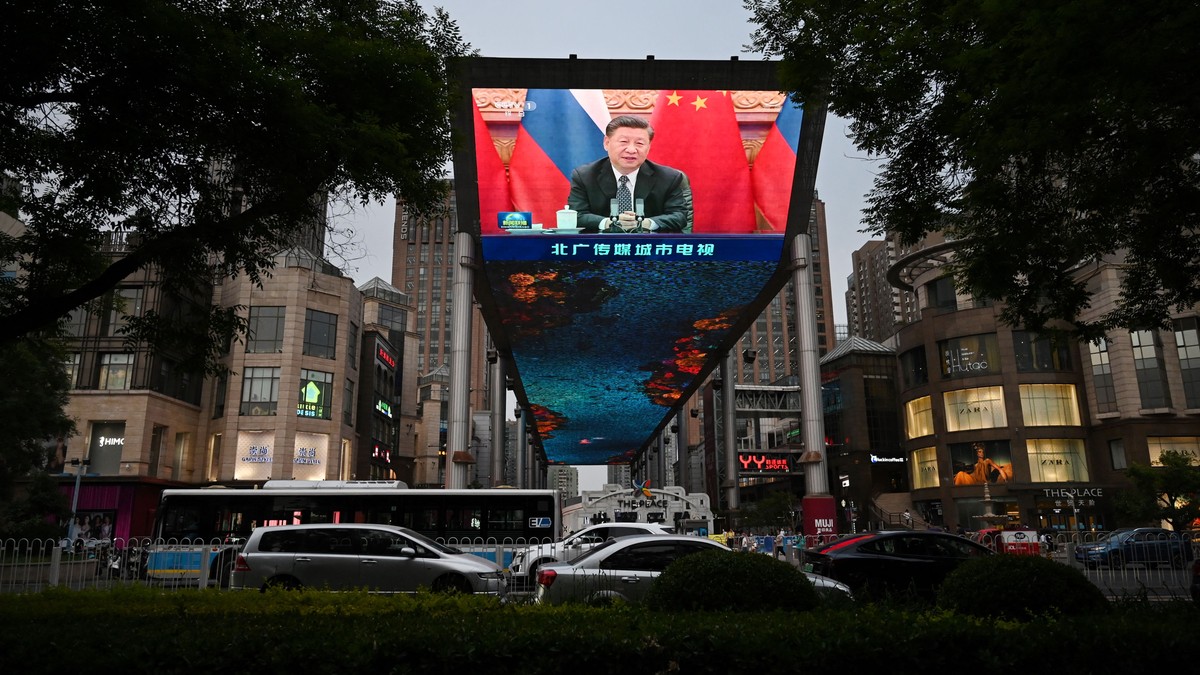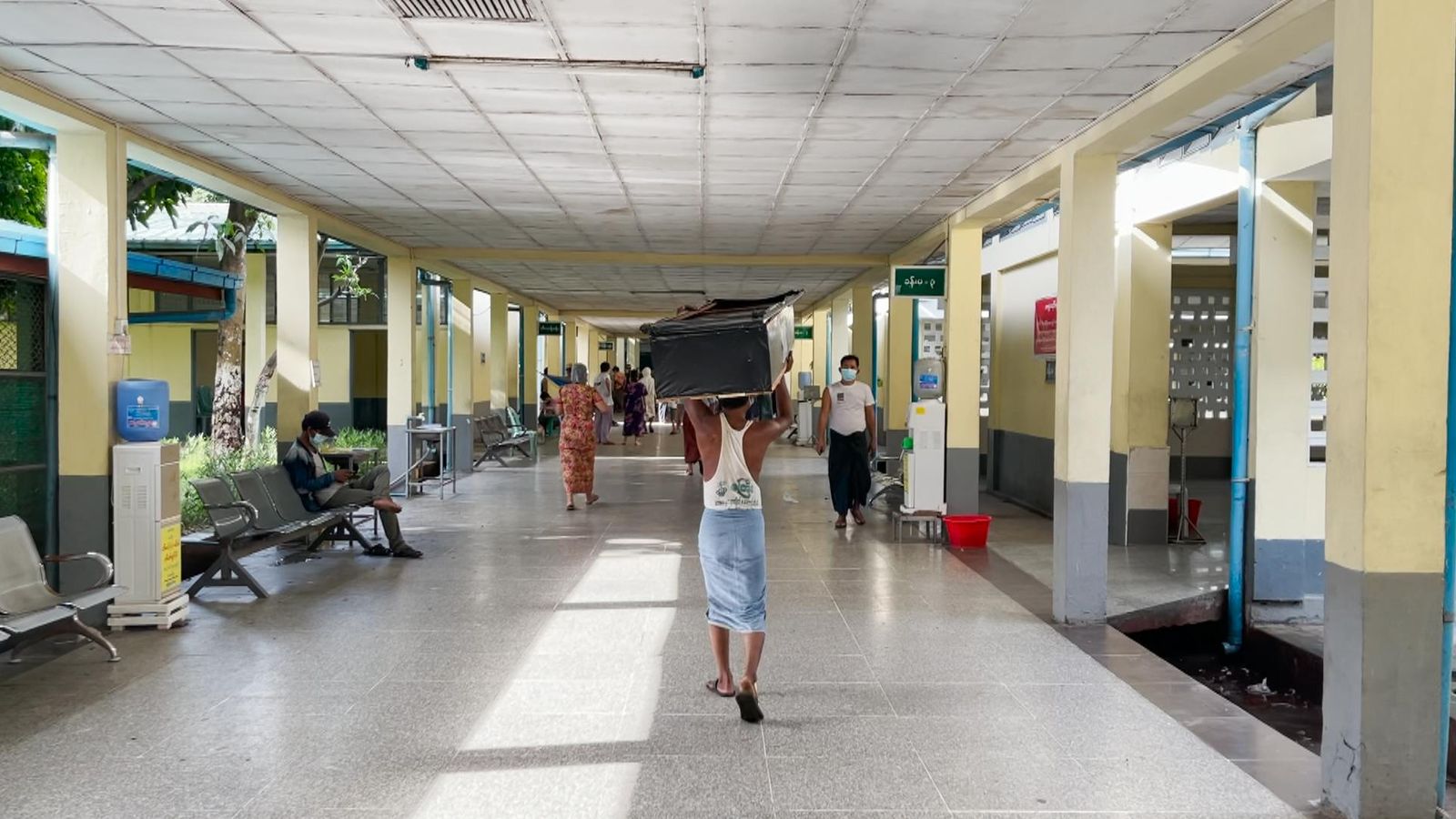[ad_1]
The mayor of this flooded metropolis arrived on the tunnel at midnight. Muddy water poured throughout the street as employees drained the six-lane-wide underpass. Dozens of onlookers gathered, hoping to glimpse what lay beneath the water. Police shooed them away.
Chen Yuanqiu lived close by. He had witnessed the flood and knew that in rush hour the tunnel could possibly be clogged with a whole lot of vehicles. The federal government stated that solely six folks had drowned. However rumors in discussion groups prompt that our bodies had been being taken out of the tunnel in secret.
Chen, who had been watching movies of the scene all day, grew skeptical of official claims. He had a troubling query: “How many individuals had been trapped inside?”
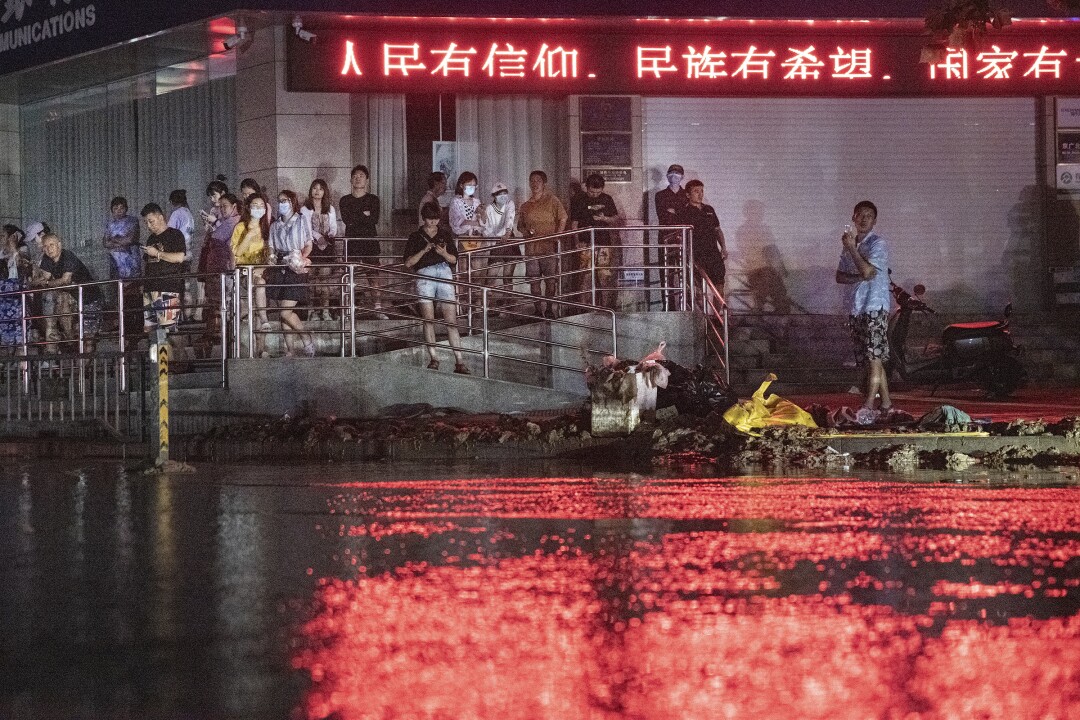
Residents watch as water is drained from the Jingguang North Street Tunnel in Zhengzhou, China.
(Liu Bowen / For The Instances)
The occasions on the tunnel underscored tensions round a storm that introduced catastrophic floods throughout central China’s Henan province final week. Slightly than sparking a public dialog about local weather change and whether or not China’s cities are ready for excessive climate, the ruling Communist Get together has restricted info and inspired nationalistic celebration amid an ongoing disaster. The result’s a way of unease as flood survivors are pressured to reward authorities reduction efforts, and those that name for accountability are attacked.
The floods have affected greater than 13.3 million folks and displaced at the very least 2.4 million, in line with official figures, with 71 deaths and 5 lacking to date. They embrace six our bodies discovered amongst 247 vehicles within the tunnel and 14 who drowned within the Zhengzhou subway, authorities say. Lists of lacking folks compiled by grass-roots volunteers embrace dozens extra.
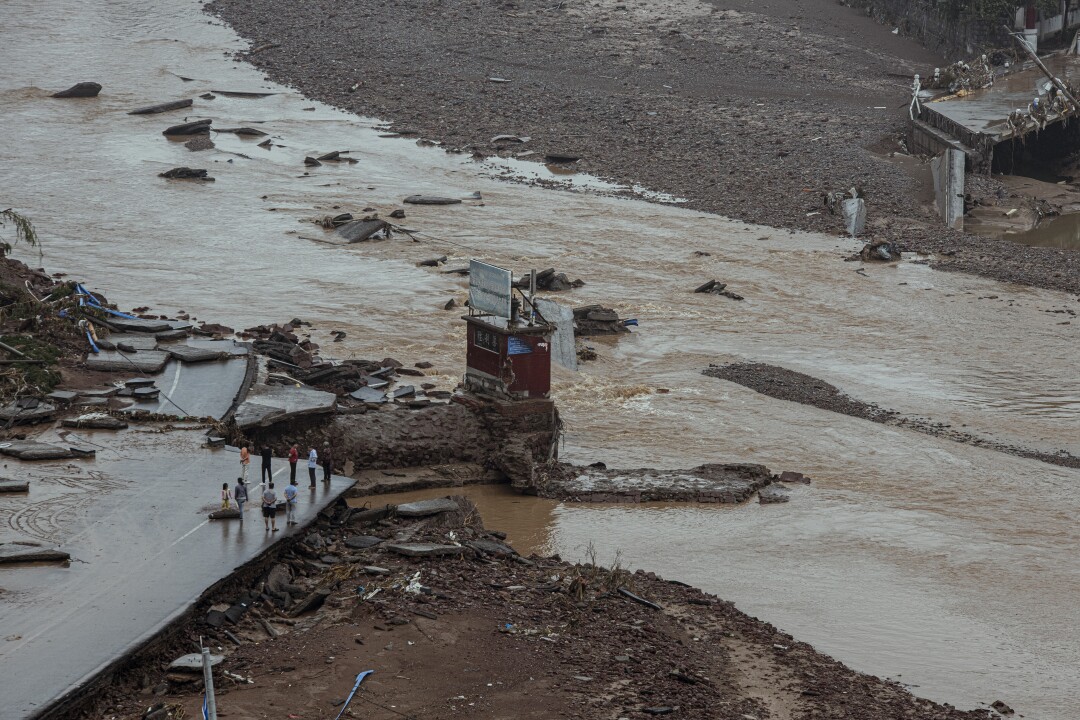
On July 20, 2021, heavy floods devastated Mihe city and close by villages in China’s Henan province, damaging a bridge throughout the Sishuihe River.
(Liu Bowen / For The Instances)
Massive swaths of Henan north of Zhengzhou are underwater, with extra rain forecast in coming days. Most of the flooded villages and smaller cities west of Zhengzhou haven’t any working water, electrical energy or cellphone reception. An enormous rescue effort is underway, together with each Chinese language navy and grass-roots volunteers who’ve rushed from throughout the nation to assist.
On the identical time, authorities propaganda is controlling the narrative. Chinese language media have been instructed to report on post-disaster restoration, keep away from an “exaggeratedly sorrowful tone” and cling to official statistics on casualties and injury, in line with a leaked censorship directive printed within the China Digital Instances.
Grief has grow to be a goal of management. On Monday, Zhengzhou residents laid dozens of bouquets of flowers on the entrance to the subway line the place the 14 had drowned. However authorities quickly erected a yellow barrier across the flowers, blocking them from view. Journalists and passersby shared pictures of the blocked memorial on-line, sparking hundreds of indignant feedback.
“They’re even afraid of flowers,” one wrote.
One other circle of flowers and candles quickly surrounded the yellow barrier. At night time, movies shared on-line confirmed Zhengzhou residents pulling the barrier down as folks applauded.
One other leaked directive instructed authorities employees to go door-to-door across the tunnel and warn shopkeepers: “Heighten consciousness, don’t settle for international media interviews, don’t give them any potentialities to twist the reality. If any related state of affairs occurs, report back to the district employees or name the police.”
The Instances was unable to confirm the directive, however international reporters from at the very least 5 completely different media retailers had been harassed whereas reporting close to the tunnel in the previous couple of days. One salesperson who spoke with The Instances about financial losses was pulled away by two girls and later threatened by her supervisor, who informed her she can be questioned by police.
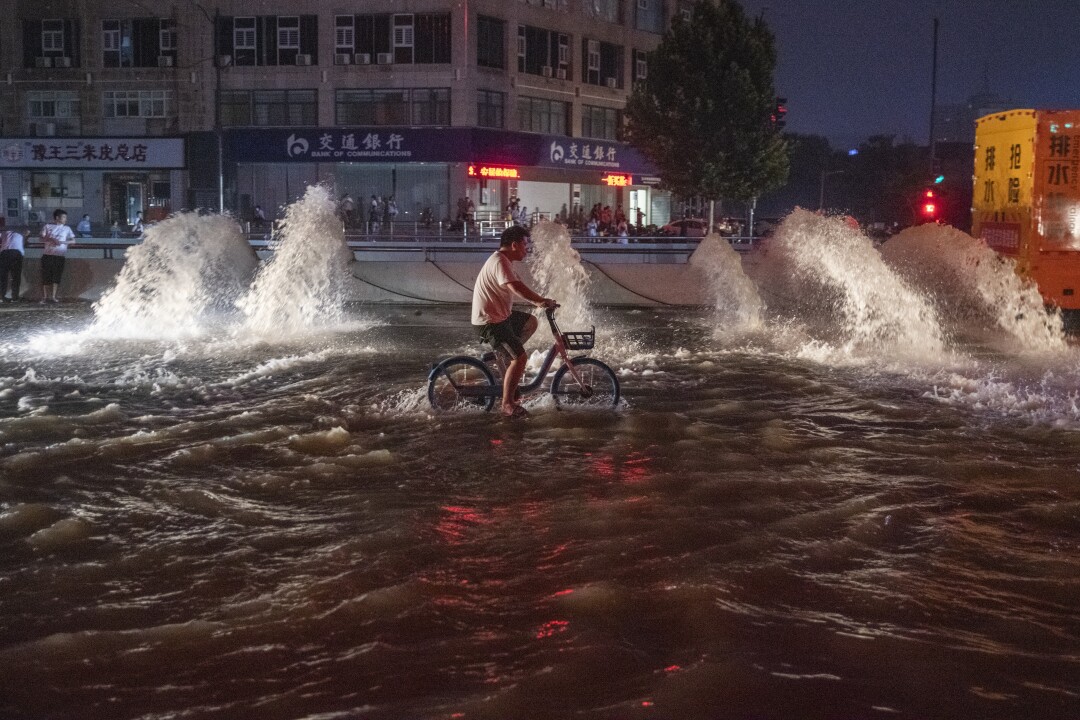
A person rides a bicycle close to the Jingguang North Street Tunnel in Zhengzhou, China, throughout a drainage operation.
(Liu Bowen / For The Instances)
Whereas reporting close to a Zhengzhou avenue, the place a number of components of the street had caved in on Friday, a Instances reporter and a German colleague had been surrounded by an indignant crowd. They accused the reporters of “smearing China” and “spreading rumors.” They demanded the journalists painting “a great view of China,” however refused to be interviewed themselves.
One man pulled out a cellphone with a screenshot and shouted, “It’s him!” They’d mistaken the German colleague for a BBC correspondent, who’d additionally reported from Zhengzhou and raised questions in regards to the metropolis’s subway and drainage system. For that, he was attacked on Chinese language social media as a “rumormonger,” with calls to hunt him down. At the least one of many manhunt calls got here from the Henan Communist Youth League’s official account.
On Weibo, China’s model of Twitter, two individuals who claimed to be survivors of the Jingguang North Street Tunnel have additionally been attacked on-line after writing about their expertise and asking why the tunnel entrance was not blocked when officers knew heavy rains had been coming. The Instances was not capable of attain them for remark.
However others, particularly flood victims within the worst-affected areas, spoke brazenly with The Instances about their misery on the destruction.
In Mihe, a city west of Zhengzhou perched on the intersection of two rivers, dozens of vehicles tangled with timber and electrical wires had been strewn in each route. A crimson truck lay capsized underneath a bridge, the river snaking previous it nonetheless heavy with mud. Its speeding roar mingled with the sound of bulldozers scooping up particles.
“So many people in Mihe have misplaced every little thing,” stated a lady sitting on a log protruding of a flooded grocery store. Her household bought lamps and lighting subsequent door. Their ground-floor storefront had been destroyed, she stated. Their warehouse provide had additionally been flooded and their supply truck washed away.
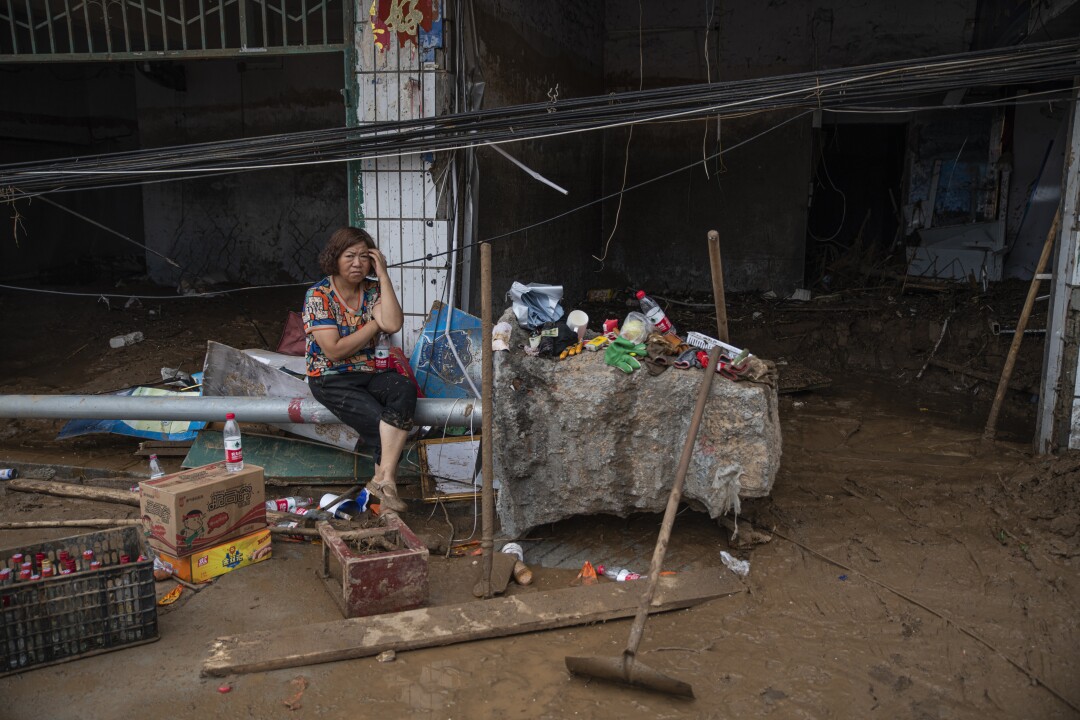
A girl takes within the flood injury in Mihe, in China’s Henan province.
(Liu Bowen / For The Instances)
“We’re empty-handed,” stated the lady, who requested to not be named as a result of she feared being known as a “rumormonger.” Many individuals had been unable to succeed in family members who had been swept away within the flood, she stated, and had been nonetheless looking for them.
Qiao Shi, 58, stood subsequent to the battered skeleton of a pink automobile on Xinxing Street, a business avenue lined with now-hollow storefronts. Everybody in Mihe had gone out to work as regular that day, he stated, regardless of the heavy rains. They’d acquired no warning of potential flooding.
“That made it even worse for us,” he stated. “The federal government ought to have informed us that morning to evacuate. At the least shield folks. We are able to overlook about property, however human security and human lives — it is best to at the very least assure that.”
Many individuals had been swept away, stated Qiao, who believed the official variety of deaths was too low: “It’s positively not simply two or three. It’s greater than 10, it’s tens of individuals.”
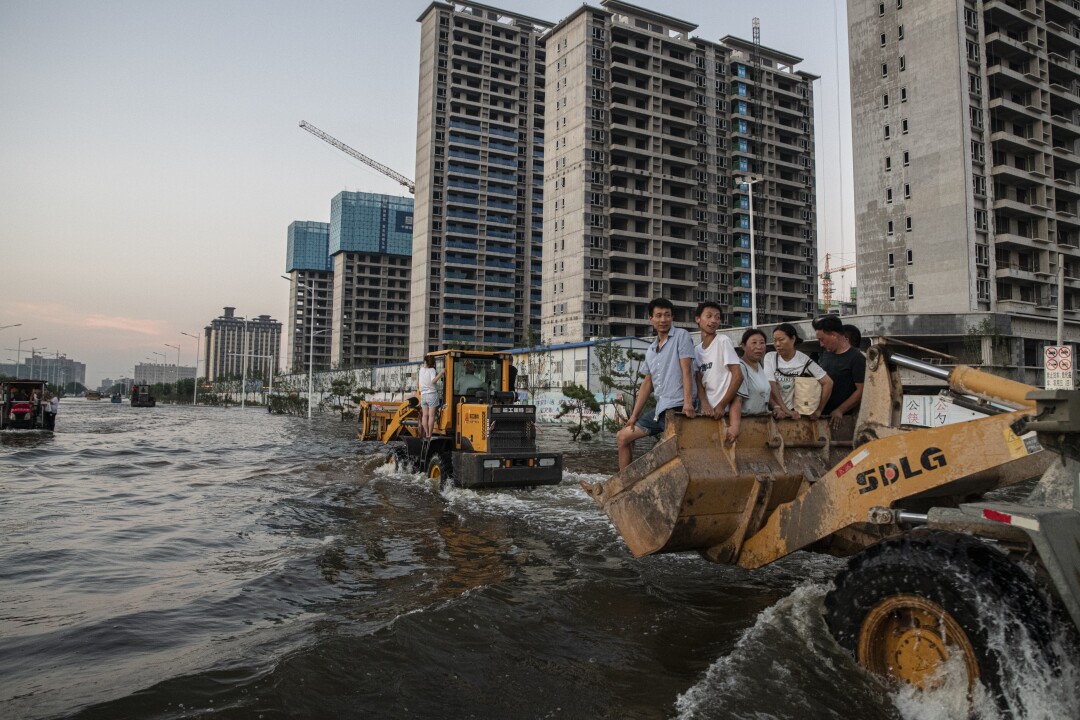
Residents of Weihui, a badly flooded city in China’s Henan province, are evacuated by bulldozers and vehicles.
(Liu Bowen / For The Instances)
“The federal government is considering of their picture,” he added. “We widespread folks have the widespread folks’s ache.”
Others had been extra forgiving and didn’t blame the federal government. Official dying and lacking tolls are nonetheless being tallied. The acute climate was past something anybody might predict, many locals stated, particularly in these components of Henan, often a dry space that doesn’t expertise heavy rains. Even the climate chief of Gongyi, the town that features Mihe, had been washed away in his automobile throughout Tuesday’s floods (and later rescued), in line with Chinese language stories.
“We’ve by no means seen such huge water,” stated Zhang Huanrong, 50, a lady who lived close to the railroad tracks behind Mihe. Zhang, whose septuagenarian uncle continues to be lacking, imitated the sound of the water: “It was like balabalabala, a whole lot of vehicles speeding out with the water, with timber and washing machines and also you don’t even know what.”
However Zhengzhou metropolis and Henan province’s climate bureaus had issued 10 crimson alerts about excessive storms within the 18 hours resulting in the flood. The alerts had been public, and at the very least in Zhengzhou, every alert got here with suggestions that the native authorities “take acceptable emergency measures” together with halting all conferences, courses and companies.
The Instances known as authorities in Zhengzhou and Gongyi to ask why emergency measures weren’t taken earlier than the floods. They referred The Instances to their native propaganda departments, which requested The Instances to name the Henan provincial propaganda workplace. It in flip despatched The Instances to the native departments once more. They then requested The Instances to ship questions by electronic mail and didn’t instantly reply.
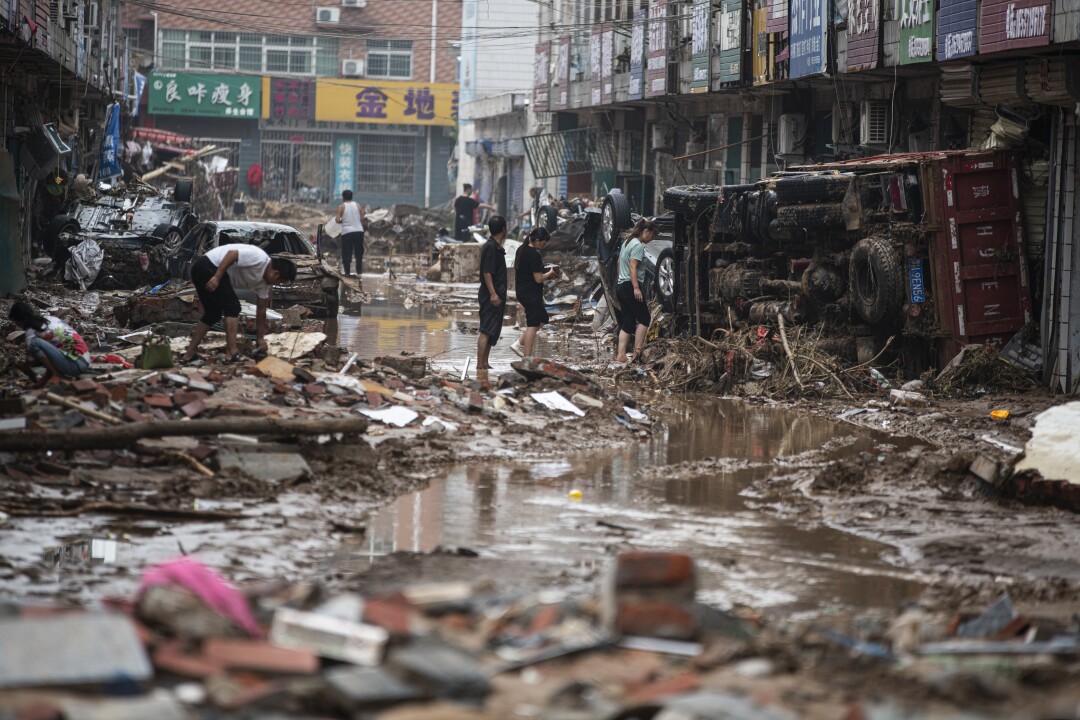
Residents of Mihe in China grapple with the flood devastation of their midst.
(Liu Bowen / For The Instances)
The scenes unfolding in Henan are following a well-recognized system in President Xi Jinping’s China: After catastrophe, authorities flip tragedy into triumph, whereas controlling victims’ narratives and quashing questions. A real outpouring of look after flood victims has been reshaped into help for the occasion, whereas anger at officers’ failures has been redirected towards “hostile international forces.”
It’s a script deployed in China with outstanding success after propaganda final 12 months obscured the federal government’s missteps in the course of the COVID-19 outbreak and Wuhan lockdown. The professional-party message persists right now in Weihui, a badly flooded smaller city north of Zhengzhou, the place some rescue vans had crimson banners held on their sides that learn: “Observe the Get together ceaselessly.”
That is all taking part in out as Chinese language folks proceed to reside their lives — and endure their hardships.
Within the hills behind Mihe, dozens of tiny villages inhabited principally by the aged had been caught in mudslides in the course of the storms. On the street to 1 village, flat fields dropped off into freshly carved craters. Bushes hung the wrong way up from their roots towards eroded crimson hills.
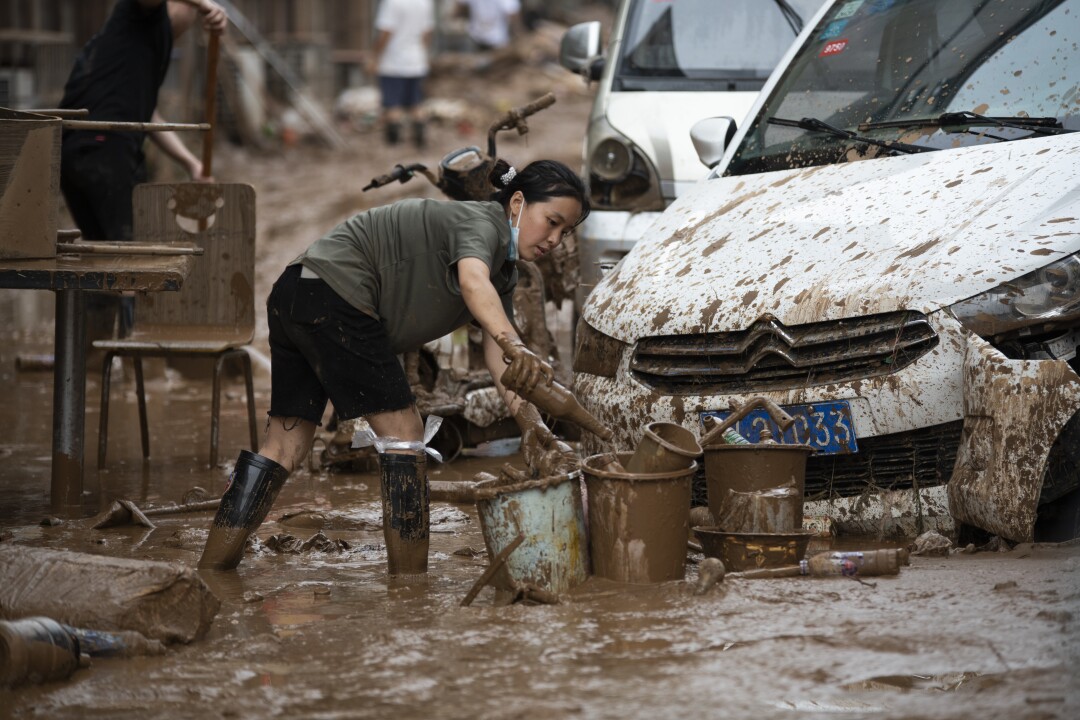
A girl cleans up amid thick mud nonetheless coating the roads of Mihe in Henan province in China.
(Liu Bowen / For The Instances)
Zhang Renzhi, 71, sporting a unfastened blue shirt and rubber sandals, sat staring on the corn area outdoors his house. His 91-year-old father sat behind him, hunched and head bowed in a picket chair. They’d been trapped right here in the course of the storm, mud and water flowing straight on to their roof because the hills appeared to break down round them.
“I used to be afraid,” stated Zhang. “There was nowhere to run. Nowhere to flee.”
For 2 days, father and son lived on the water and meals that they had saved inside, with out energy, electrical energy or a cellphone sign. Rescue employees got here to evacuate them on the third day, however Zhang, nervous that his father was too frail to maneuver, turned them away. He had already began shoveling mud from the lounge, the entrance yard, the roof.
As night time fell, they’d keep at the hours of darkness, ready for the following rain.
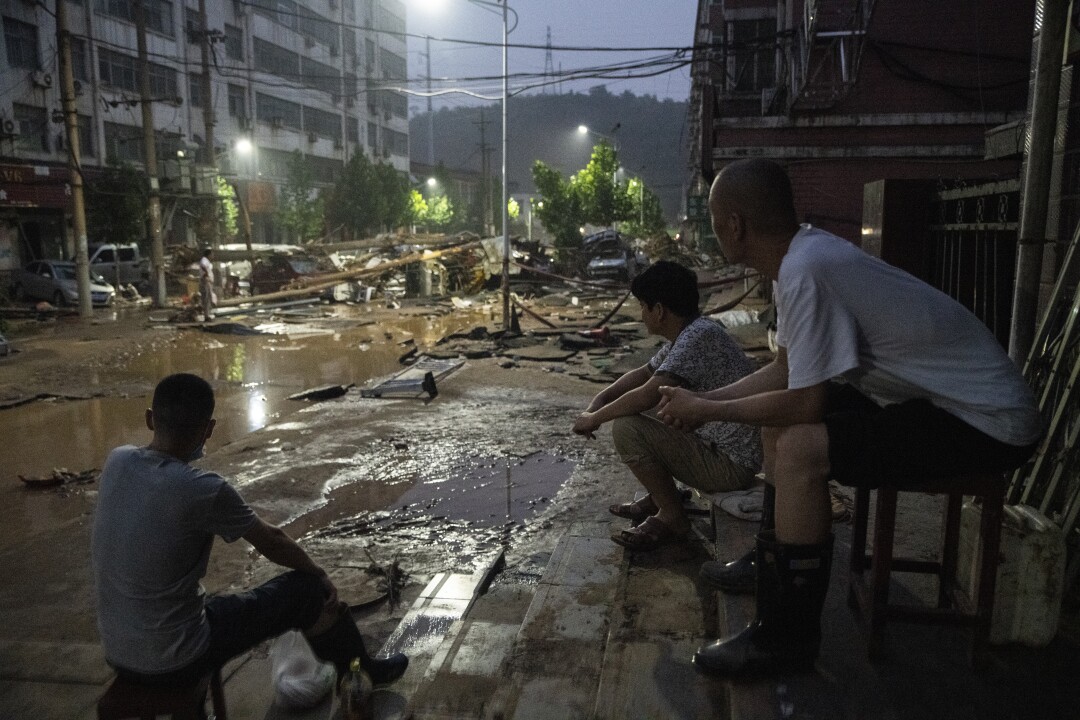
Residents of Mihe in China’s Henan province take inventory of the injury of their city as night time falls.
(Liu Bowen / For The Instances)
[ad_2]
Source link





